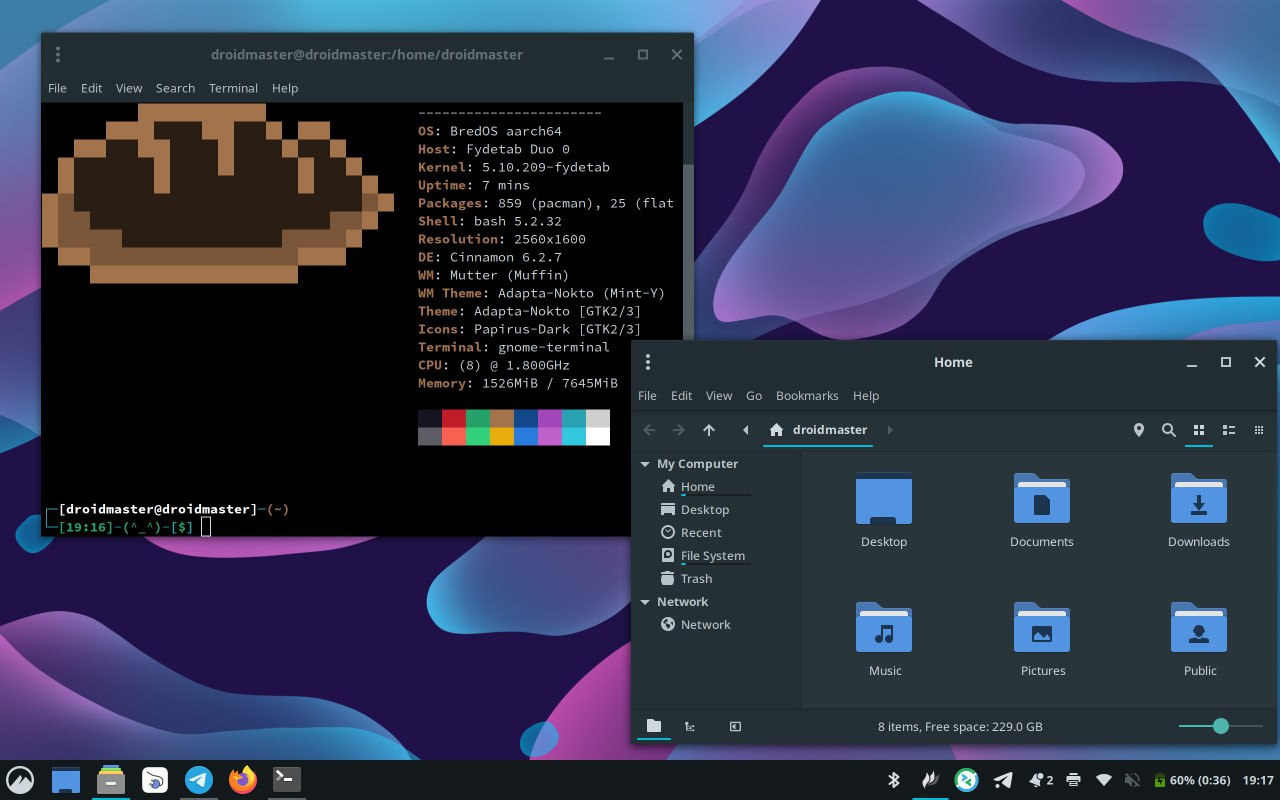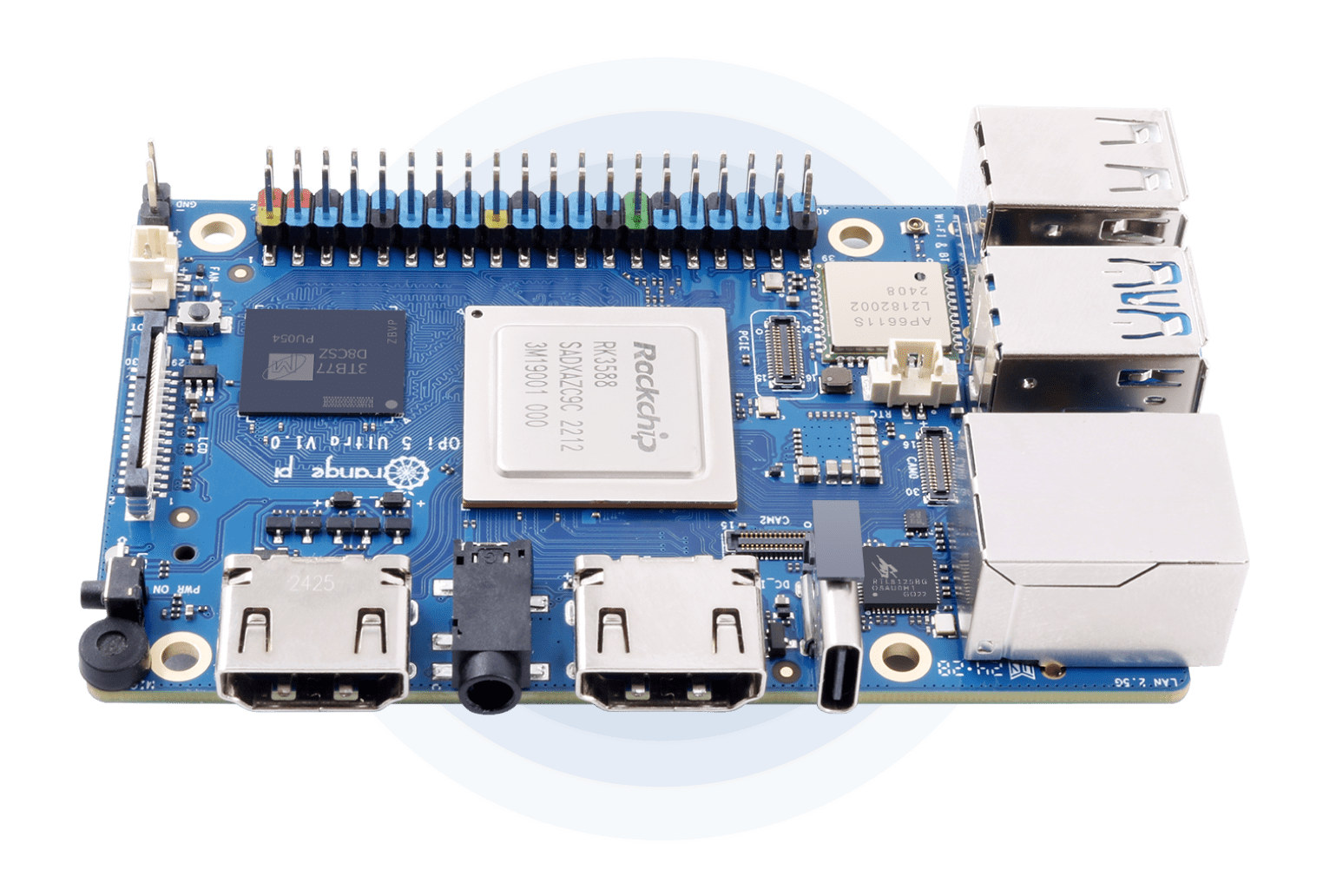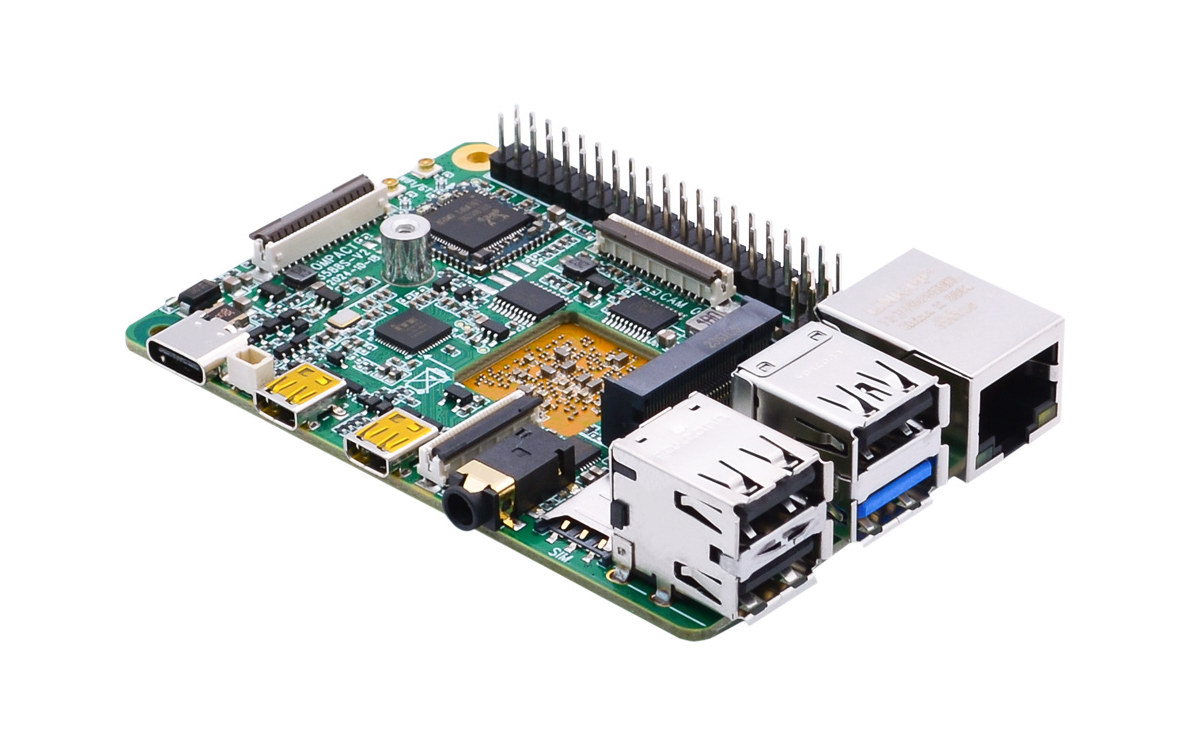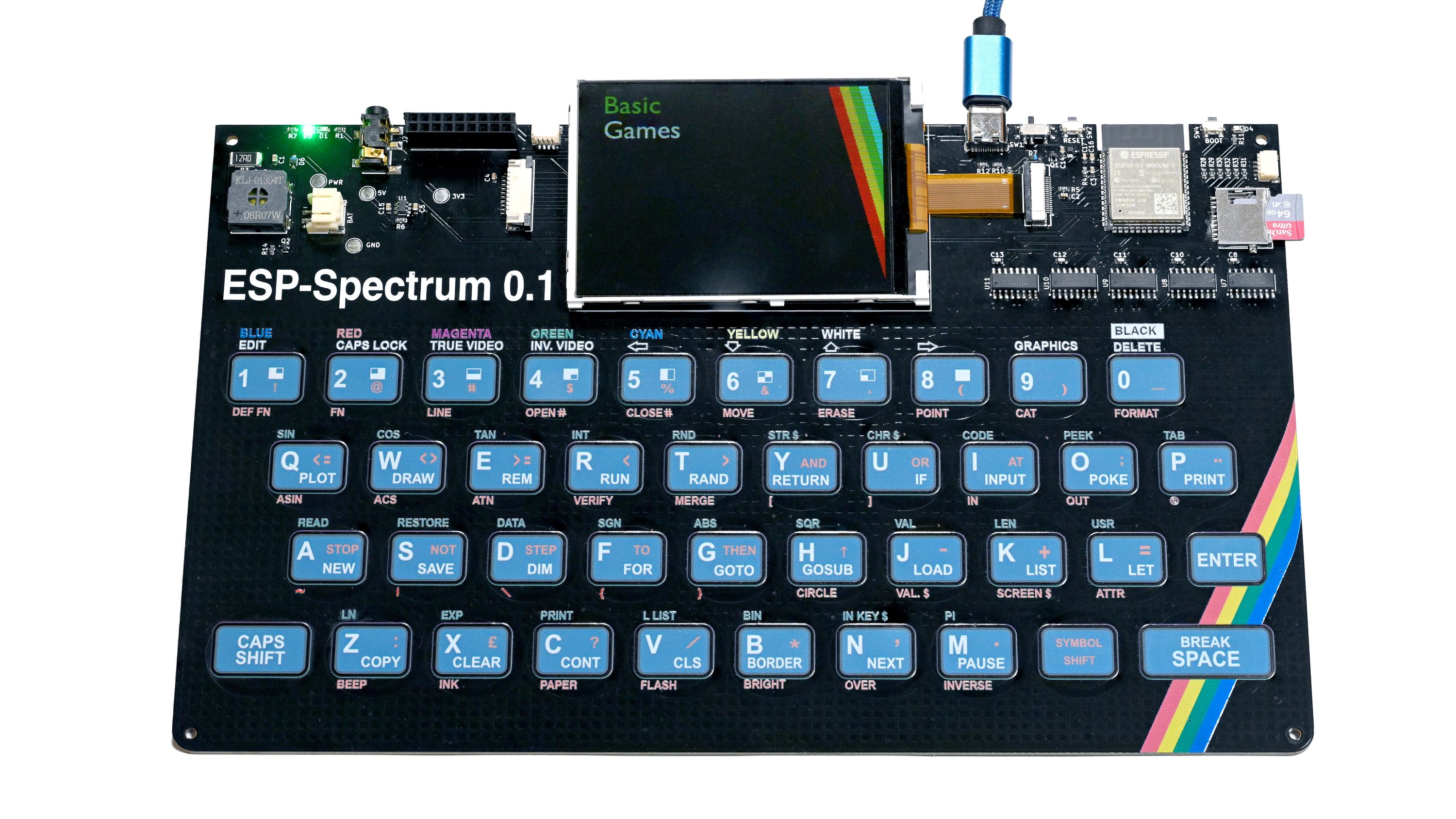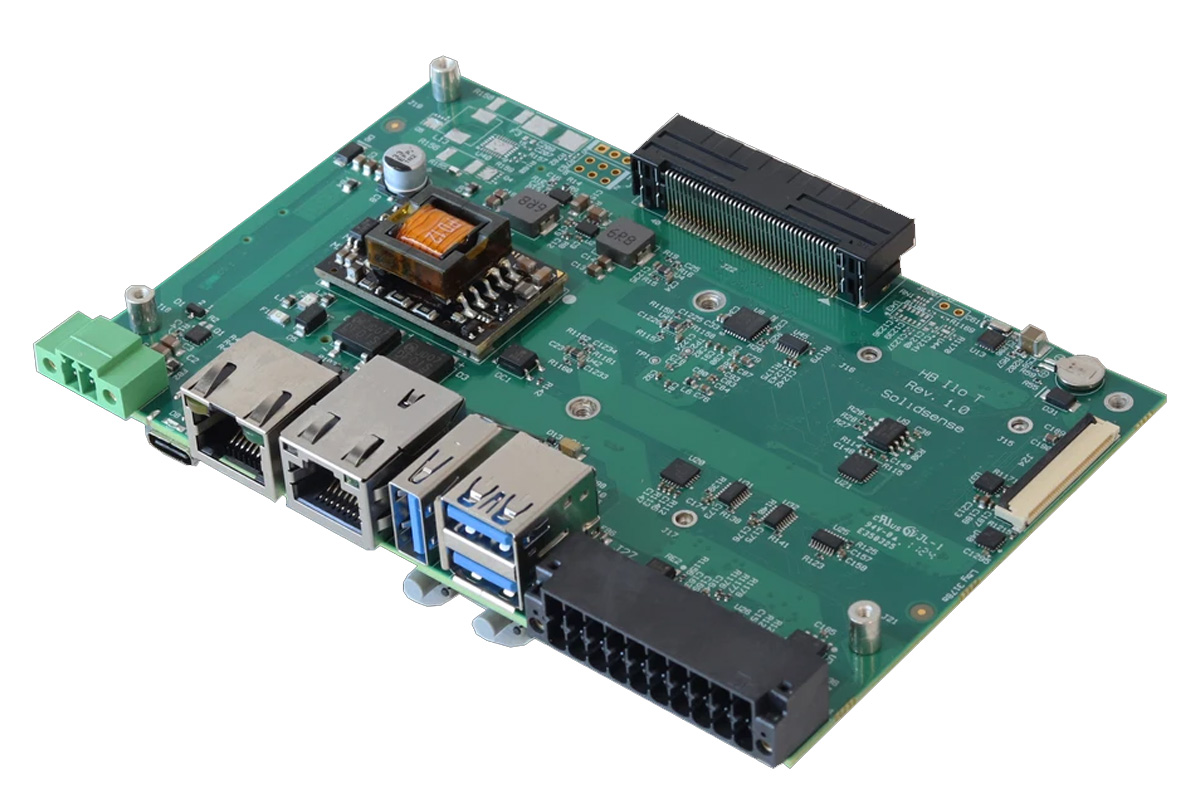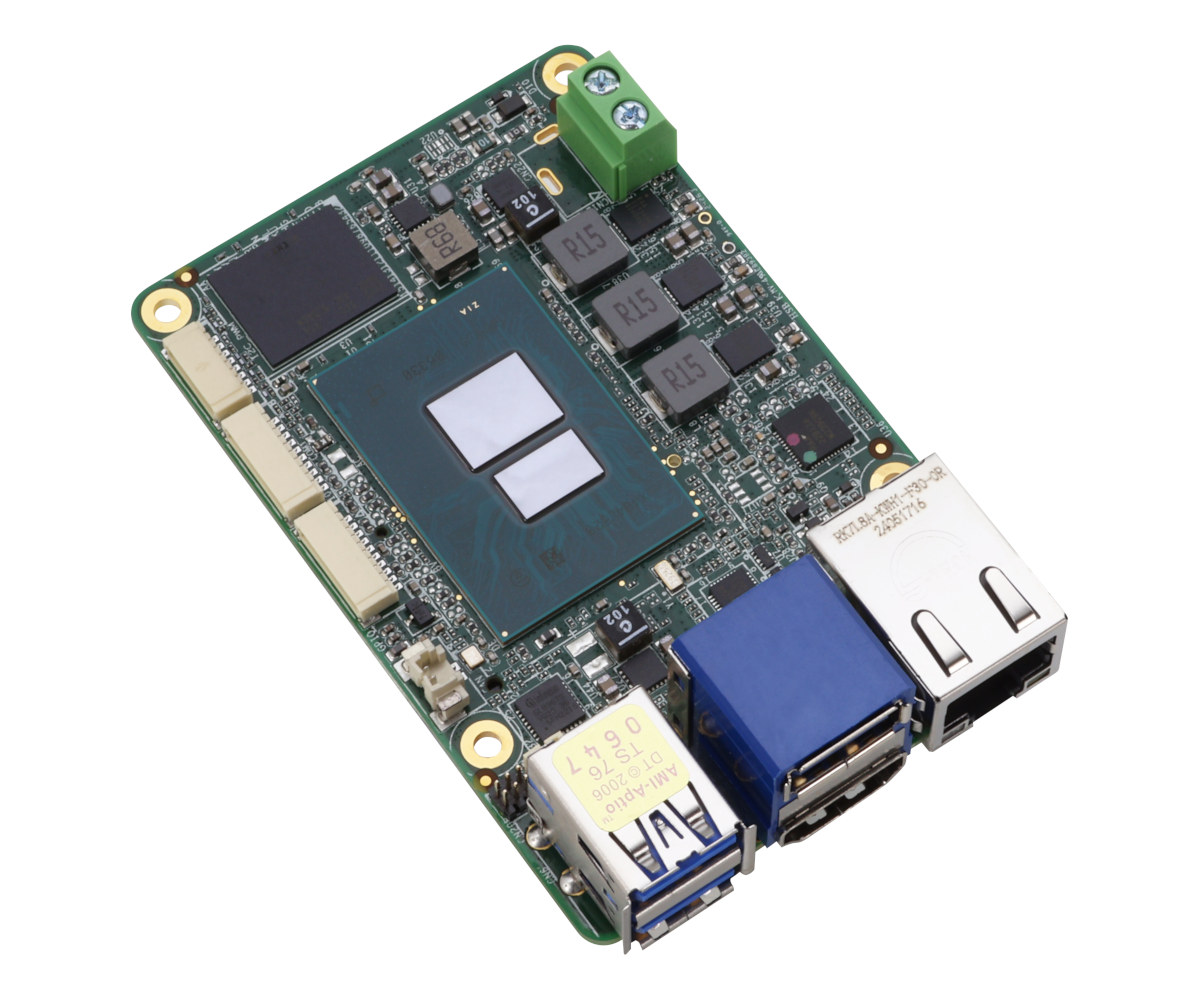Olimex RP2040pc is an inexpensive “all-in-one” computer board based on a Raspberry Pi RP2040 MCU with support for Apple //e, Apple ][+, and Oric Atmos emulation through the Reload emulator. The board features an HDMI port, stereo audio, four USB ports, and two UEXT expansion connectors. It’s not quite the first RP2040 retrocomputing board from Olimex, as they introduced the RP2040-PICO-PC in 2021 with an HDMI port, a 3.5mm audio jack, and a microSD card slot before launching the Olimex NEO6502, which combines a MOS6502 MCU for Apple II, Oric, and Commodore 64 emulators with an RP2040 for HDMI/DVI video output and a few other things. The RP2040pc is similar to the latter, but with more ports and features, and everything is handled by the Raspberry Pi RP2040 microcontroller. Olimex RP2040pc specifications: Microcontroller – Raspberry Pi RP2040 dual-core Cortex-M0+ MCU @ 133 MHz with 264 KB SRAM Storage – 16MB […]
BredOS Arch Linux Arm distribution runs on Rockchip RK3588 single board computers
BredOS is a Linux distribution based on Arch Linux Arm and optimized to run on Rockchip RK3588/RK3588S single board computers (SBCs) with current support for 22 boards from Radxa, Orange Pi, Khadas, and others. Board vendors will usually provide OS images for their SBCs, but the quality and support may be limited, so projects like Armbian and DietPi are maintaining Ubuntu and/or Debian images for popular single board computers. But if you’re an Arch Linux (Arm) fan, there are fewer choices, and you may have to roll your own port for your board. BredOS provides an easy-to-use alternative based on Arch Arm Linux. BredOS highlights (provided by the developers): User-Friendly Interface – A simplified and intuitive user interface for easy navigation and use. Arch-Based – Built on top of Arch Linux, ensuring access to a vast repository of packages and a rolling release model. Arm Support – Optimized for Arm-based […]
Orange Pi 5 Ultra SBC offers HDMI 2.1 output and HDMI 2.0 input
The Orange Pi 5 Ultra is a Rockchip RK3588 SBC that’s slightly larger than a business card and visually identical to the Orange Pi 5 Max introduced last August, but replacing one of the two HDMI 2.1 video outputs on the latter with an HDMI 2.0 input port. The new single board computer is still offered with up to 16GB LPDDR5, an eMMC flash module connector or soldered-on eMMC flash, an M.2 socket for an NVMe SSD, 2.5GbE and WiFi 6E networking, and four USB 3.0/2.0 ports. Orange Pi 5 Ultra specifications: SoC – Rockchip RK3588 CPU – Octa-core processor with 4x Cortex-A76 cores @ up to 2.4 GHz, 4x Cortex-A55 cores @ up to 1.8 GHz Arm Mali-G610 MP4 GPU with support for OpenGL ES1.1/2.0/3.2, OpenCL 2.2, and Vulkan 1.2 6 TOPS AI accelerator with support for INT4/INT8/INT16/FP16 mixed operation VPU – 8Kp60 H.265/VP9/AVS2 10-bit decoder, 8Kp30 H.264 decoder, […]
Boardcon Compact3588S SBC – A Raspberry Pi 5 alternative based on Rockchip RK3588S AI SoC with M.2 socket for SSD or 4G LTE module
Boardcon Compact3588S SBC is another Raspberry Pi 5 alternative powered by a Rockchip RK3588S octa-core Cortex-A76/A55 SoC with a 6 TOP NPU for AI acceleration, up to 16GB RAM, up to 256GB eMMC flash, and all the features found in the Raspberry Pi 4, plus an M.2 socket supporting either an NVMe SSD or a 4G LTE module in conjunction with a Nano SIM card slot. It more closely follows the Raspberry Pi 4 form factor, but Rockchip RK3588S’ performance and capabilities make it a direct Raspberry Pi 5 competitor. Contrary to most credit card-sized single board computers, it follows a carrier board + soldered-on system-on-module design, rather than a single PCB. Boardcon Compact3588S specifications: SoC – Rockchip RK3588S CPU – Octa-core processor with 4x Cortex-A76 cores @ up to 2.4 GHz, 4x Cortex-A55 cores @ up to 1.8 GHz GPU – Arm Mali-G610 GPU with OpenGL ES 3.2, OpenCL […]
ESP32 Rainbow is an open-source, ESP32-S3-powered ZX Spectrum single board computer (Crowdfunding)
Retrocomputing enthusiasts will be delighted to learn that a new ZX Spectrum replica is on the market: the ESP32 Rainbow. The single board computer swaps the Zilog Z80 for an ESP32-S3 microcontroller chip running an emulator, bringing the classic 80s computer back to life with a modern twist. It features a built-in color display, a microSD card slot for storage, a built-in touch keyboard in the ZX Spectrum style, and a USB Type-C port for power and data. The keyboard was recreated using full-color UV printing and is the most true-to-life component of the ESP32-S3-based ZX Spectrum single board computer. The touch keys won’t likely offer the best typing experience but that is reminiscent of the original ZX Spectrum. A lovely cherry on top is that the onboard USB-C port supports HID and the device can be used as a keyboard on another computer. The ZX Spectrum is one of […]
SolidRun unveils HummingBoard i.MX8M IIOT SBC and the IIOT-200-8M Gateway for Edge AI and industrial IoT applications
SolidRun has recently introduced HummingBoard i.MX8M IIOT SBC and IIOT-200-8M Gateway built around the NXP i.MX 8M Plus Edge AI processor. Designed for IIoT and HMI applications the SBC hosts the NXP i.MX 8M Plus SOM which gives access to various connectivity options, including dual Gigabit Ethernet, Wi-Fi/Bluetooth, CAN-FD, RS232/RS485, and audio. Additionally, it has support for industrial protocols such as Modbus and MQTT, making it suitable for factory automation and smart energy projects. Based on the HummingBoard i.MX8M IIOT SBC, the IIOT-200-8M Gateway features a DIN-rail mountable design, which sacrifices some I/O interfaces to meet the demands of harsh deployment environments. Both products support Industrial temperature ranges, fanless construction, and compact dimensions, making them reliable choices for demanding applications like industrial automation, predictive maintenance, and remote monitoring. HummingBoard i.MX8M IIOT SBC Specifications SoC – NXP i.MX 8M Plus AI SoC CPU Quad-core Arm Cortex-A53 processor @ up to 1.6 GHz […]
Black Friday and Cyber Monday 2024 – International deals and coupons
While Black Friday and Cyber Monday used to be a US-only event, it changed many years ago, and we’ve been writing about international Black Friday and Cyber Monday deals and coupon codes since 2014, since a large portion of our audience cannot benefit from promotions on Amazon’s Black Friday and Cyber Monday events that will take place from November 21 until December 2 this year. So I’ve gathered some international Black Friday and Cyber Monday 2024 deals and discount coupon codes from relevant manufacturers and popular online stores such as Aliexpress, Banggood, and others. Aliexpress Black Friday and Cyber Monday event Aliexpress’ Black Friday and Cyber Monday 2024 event has already started. There are three periods: Nov 19-21 PST – Warm Up event where users can find and add items to the cart before purchasing during the main event. Nov 22-30 PST – “On Sale” event with discounts up to […]
UP 710S – A slim, credit card-sized Intel N97 development board with M.2 E-Key WiFi socket and GPIO, I2C, SPI, and COM wafers
AAEON’s UP 710S is a credit card-sized Intel N97 SBC and development board with an M.2 E-Key socket for a WiFi and Bluetooth module, and similar interfaces such as gigabit Ethernet, USB 2.0, USB 3.0, and HDMI outputs as found in Raspberry Pi boards. It’s very similar to the UP 7000 SBC with Intel N50, N97, or N100 CPU, but it’s designed to be slimmer so the 40-pin Raspberry Pi-compatible header has been replaced by 1mm pitch wafers exposing GPIO, I2C, SPI, and serial (COM) interfaces. UP 710S specifications: Alder Lake-N SoC Default – Intel Processor N97 quad-core processor up to 3.6 GHz with 6MB cache, 24EU Intel UHD Graphics Gen 12 @ 1.2 GHz; TDP: 12W Options – Intel N50, N100, N200 System Memory – Up to 8GB LPDDR5 Storage Up to 128GB eMMC flash 256Mbit flash for the BIOS/UEFI Video Output – HDMI 1.4b video output up to 4Kp30 […]



